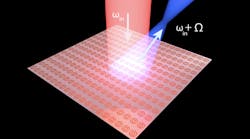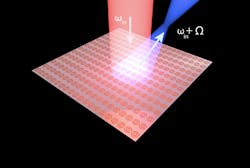Tunable Microwave Reflector Could Be the Next-Generation Antenna
Engineers at Los Alamos National Laboratory are reinventing the mirror, at least for microwaves. Their invention could replace the familiar satellite dishes and microwave horns seen on rooftops and cell towers with flat panels that are compact, versatile and better adapted for modern communications.
“Our new reflectors offer lightweight, low-profile alternatives to conventional antennas. This is a potential boon for satellites, where minimizing weight and size is crucial,” says Abul Azad, of the MPA-CINT group at Los Alamos National Laboratory. “The panels could be easily incorporated onto surfaces of buildings or terrestrial vehicles as well.”
Most reflectors are reciprocal. So, if you can see someone reflected in a mirror, they can see you too. The new reflector design breaks reciprocity, effectively turning it into a one-way mirror.
The flat-panel reflector can be controlled electronically, which means its characteristics can be reconfigured on the fly. This opens the window for beam steering, customized focusing and other functions difficult to get with conventional antenna designs. Miniaturized versions could improve chip-based circuitry by ensuring signals go only to the intended components and don’t lead to inadvertent signals in other parts of the circuit, a problem for chip designers.
The reflectors are composed of an array of finely structured electronic components on a planar surface. Applying signals to the components lets the 2D reflector perform much like a 3D antenna, and in some cases do things no conventional antenna could do. This sort of a device is known as a “metasurface” because its characteristics can be electronically changed to act in different ways without modifying the surface’s physical shape.
Applying electrical signals to the reflector components will let operators modulate the metasurface to control the direction and frequency of reflected light. The reflector’s nonreciprocal response will help prevent antennas from picking up echoes from outgoing broadcasts and protect delicate circuitry from powerful, potentially damaging incoming signals.
“We have demonstrated the first dynamic metasurface that can be non-reciprocrocal by converting microwaves into plasmons, which are electric charge waves on the reflector’s surface,” said Diego Dalvit, a Los Alamos researcher.
The new reflector could be used in adaptive optics that account for distortions that disrupt signals, one-way wireless transmission and novel antenna designs.

